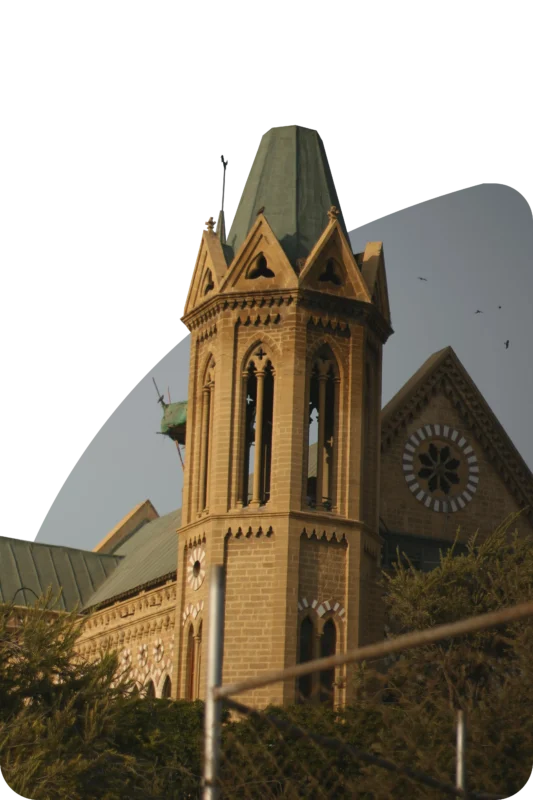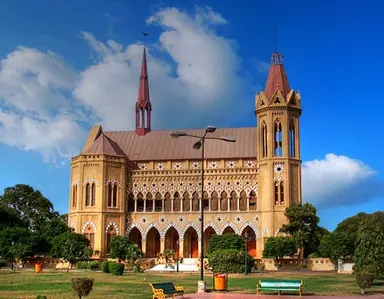Sadequain

Foundation
Sadequain
Foundation


Building
Sadequain's Ferre Hall
Frere Hall is a building in Karachi, Pakistan that dates from the early British colonial era in Sindh. Completed in 1865, Frere Hall was originally intended to serve as Karachi's town hall, and now serves as an exhibition space and library.
History
The building was intended to serve as Karachi's town hall, and was designed by Henry Saint Clair Wilkins, who was chosen from among
12 candidates.


Directions
Location Of This Place
The building’s land was purchased at a cost of 2,000 British Indian rupees, which had been donated by WP Andrew of the Scinde Railway, and Sir Frederick Arthur Bartholomew. The total cost of the Hall was about 180,000 rupees, out of which the Government contributed 10,000 rupees, while the rest was paid for by Karachi municipality.
Work commenced in August 1863 and continued until October 1865; construction had not been entirely completed by the time of its inauguration.
In 1877 at Frere Hall, the first attempt was made to form a consistent set of rules of badminton. Following the death of Sir Henry Bartle Edward Frere in 1884, the building was renamed in his honour. Frere was a British administrator who was known for promoting economic development in Sindh, as well as for making the Sindhi language the language of administration in Sindh, rather than the Persian language, which had been favoured by the Mughals.
Following the independence of Pakistan, the hall’s library was renamed as Liaquat National Library. The library is one of Karachi’s largest, and houses a collection of more than 70,000 books, including rare and hand-written manuscripts.
Pubically
Exhibition Space
Frere Hall houses a number of stone busts, including that of King Edward VII, which was a gift from local Parsi philanthropist Seth Edulji Dinshaw. Frere Hall also houses oil paintings by Sir Charles Pritchard, who was a former Commissioner of Sindh.
As of 2022, Frere Hall was open to the public, and it is also one of the most important tourist attractions in Karachi because of the building’s notable architecture and its association with British rule in the Subcontinent.
